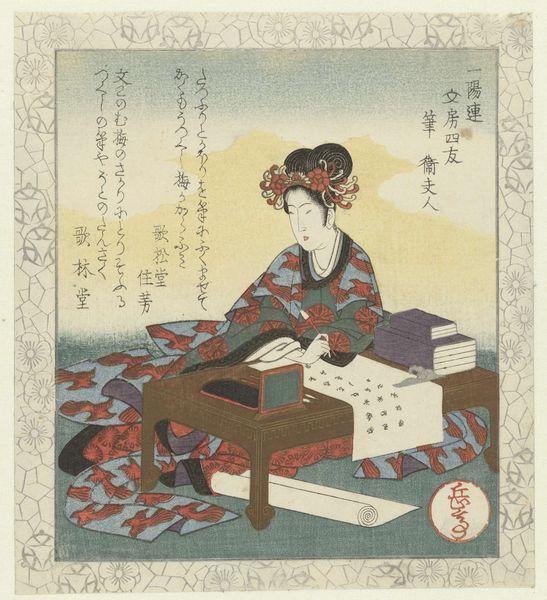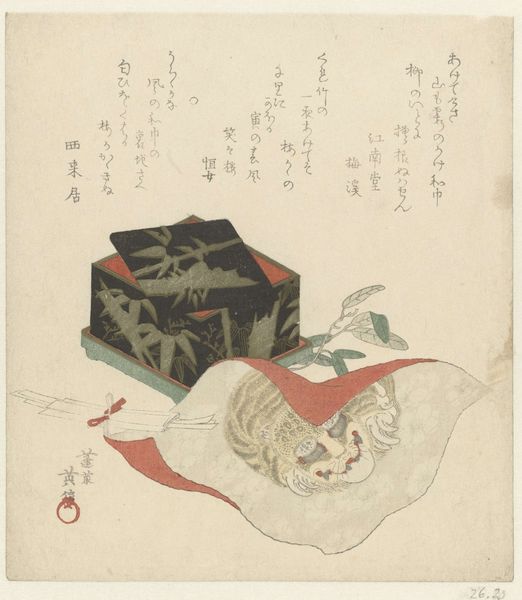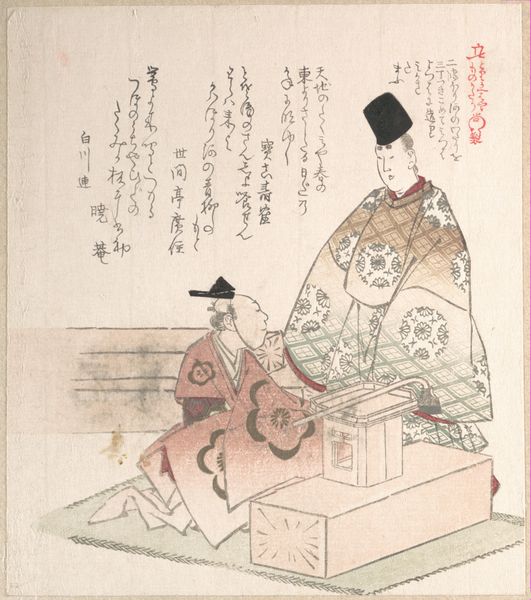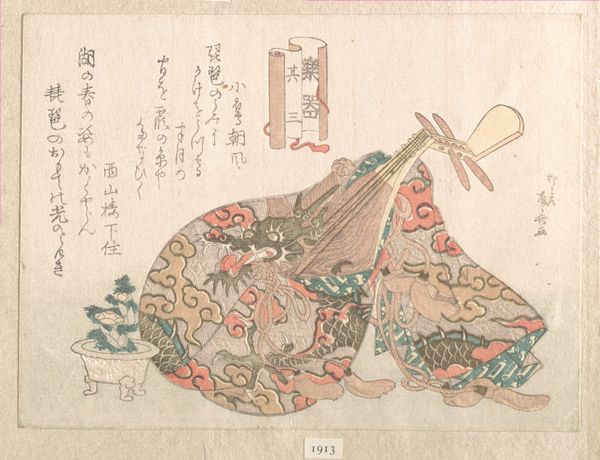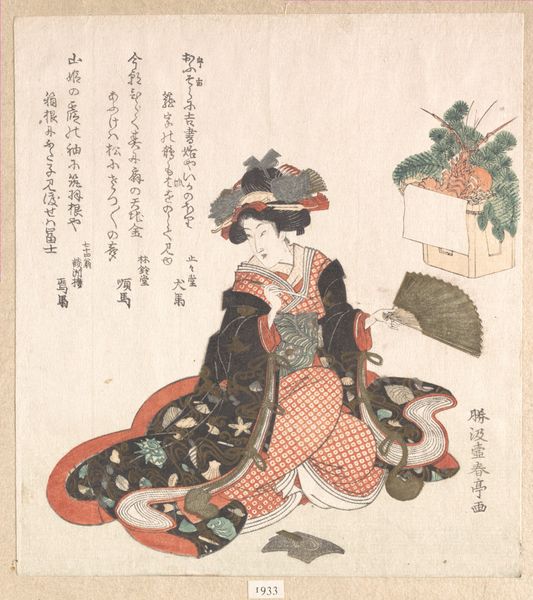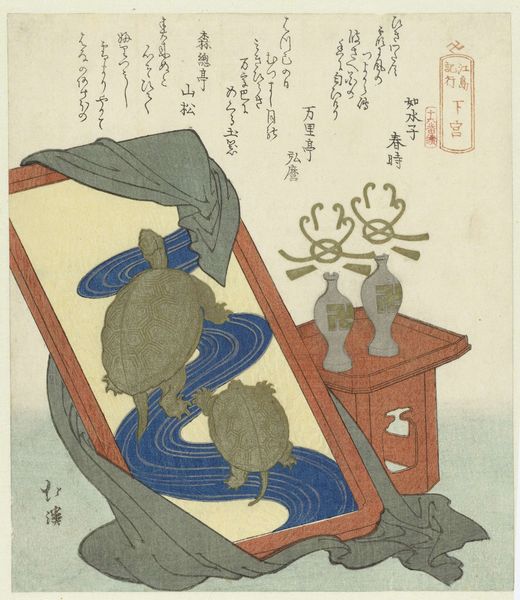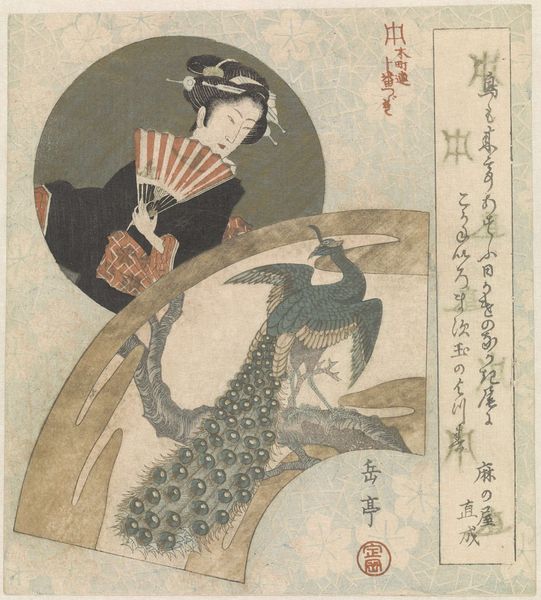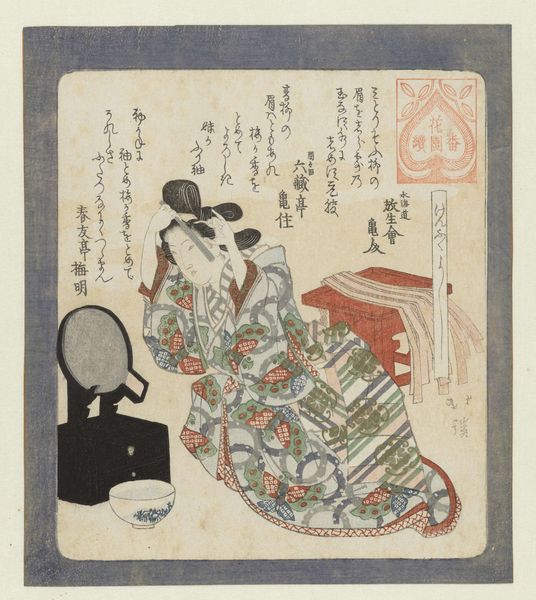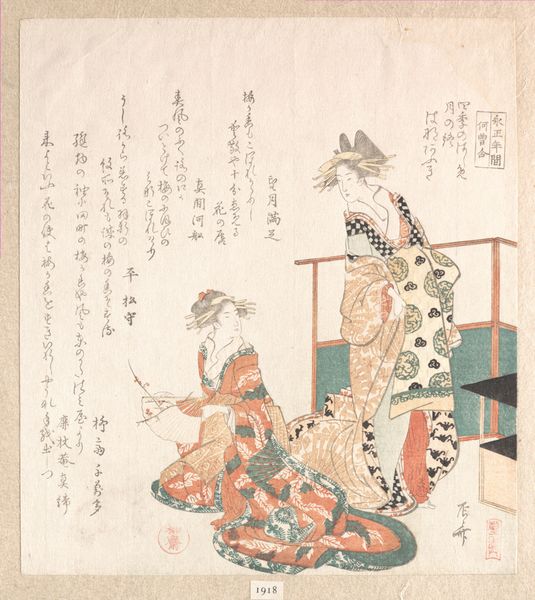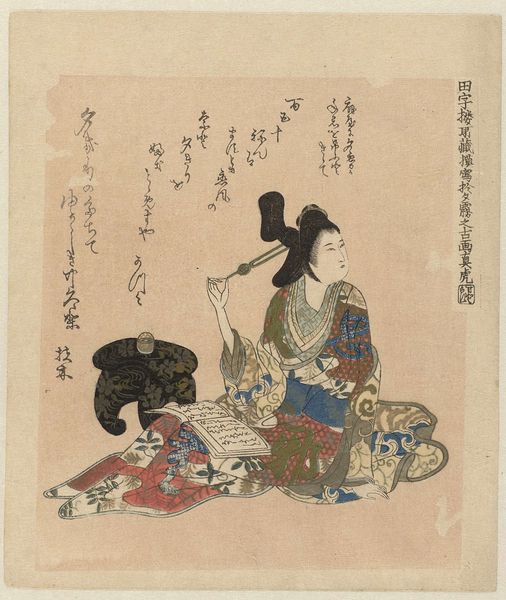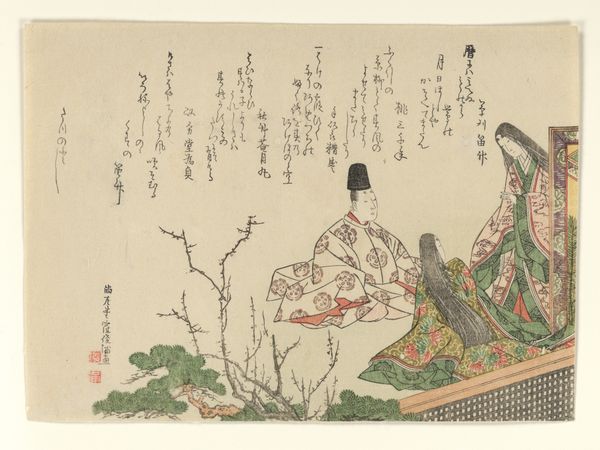
Dimensions: height 210 mm, width 185 mm
Copyright: Rijks Museum: Open Domain
Editor: Here we have "Kimono met konijn," a woodblock print from around 1890-1900 by Totoya Hokkei, currently housed in the Rijksmuseum. I find the composition intriguing – the rabbit appearing almost as a reflection, set against the elaborate textile patterns. What catches your eye in this piece? Curator: The initial point of access lies within the formal relations established between the visual elements. Observe how the artist uses contrasting textures and patterns. The geometric precision of the kimono stand contrasts sharply with the fluid lines depicting the rabbit and the more organic swirls of water. Do you notice the restricted palette? Editor: Yes, the limited colours – primarily red, blue, and shades of white – create a sense of harmony despite the contrasting patterns. How does that play into the meaning, or intention of this print? Curator: The success of this woodcut depends on understanding the symbolic weight vested in particular components, apart from mere referential content. Focus first, instead, on compositional qualities, such as the arrangement of positive and negative space and the flatness in perspective, and the strategic usage of color. What statements about pictorial representation do those formal techniques reveal? Editor: So you're saying it's not just about what the rabbit represents, but *how* it's represented that gives us clues. I hadn't considered the interplay between the flat perspective and the textures. Curator: Precisely. It invites questions regarding representation, spatial relationships and meaning without being bogged down by conventional or historical context. It asks for deeper visual awareness, nothing less. Editor: That gives me a whole new perspective on analysing art. Curator: Indeed. The composition then reveals itself as an aesthetic statement rather than simply as a scene.
Comments
No comments
Be the first to comment and join the conversation on the ultimate creative platform.

